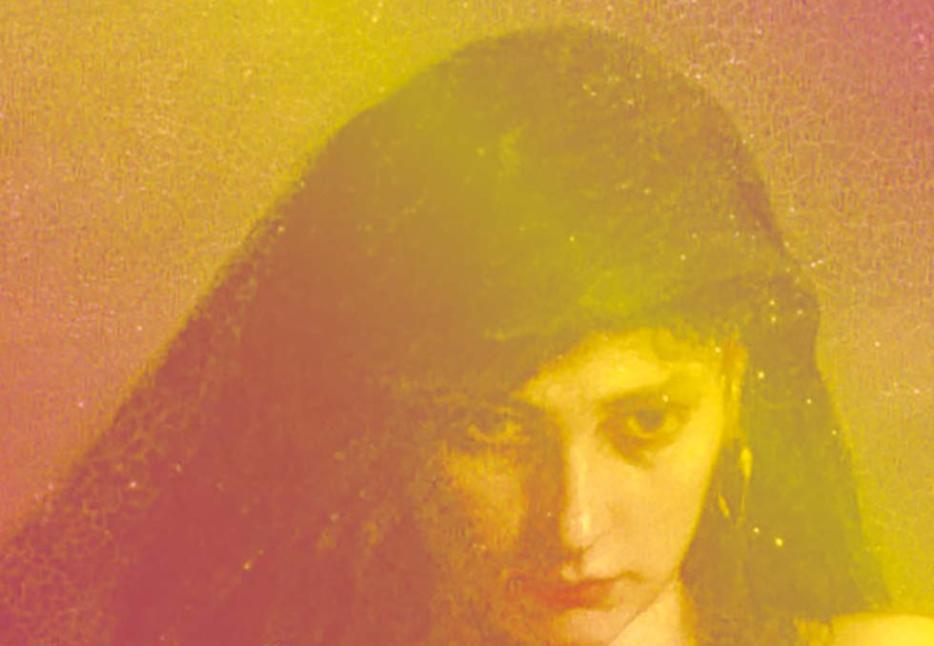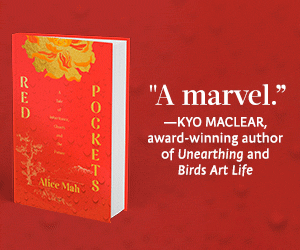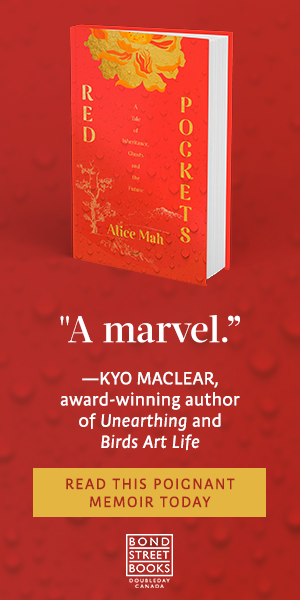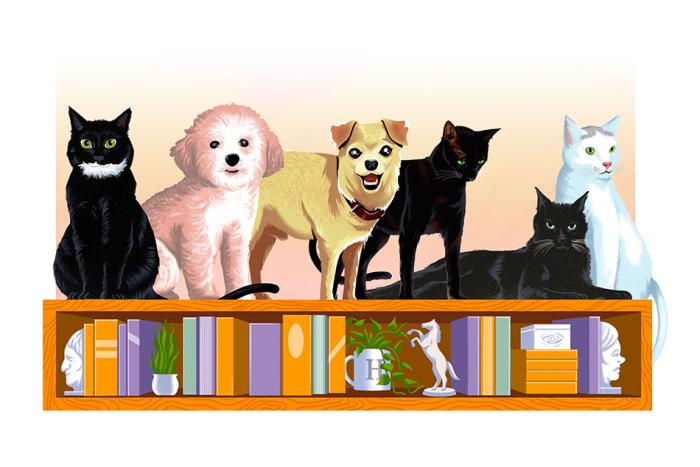I can’t quit you, babe, sang Robert Plant on the classic rock station as I drove to work, so I’m gonna put you down for a while. It had been only two weeks, but everything seemed to lead back to my celibacy, including the radio’s persistent characterization of love as a disease, an addiction, a form of bondage. This perception is called the Baader-Meinhof phenomenon, or frequency illusion. The most commonly given example is when one learns a new word and it suddenly appears everywhere. There was less illusion in this case, however, because the majority of songs on the radio really are about love, and the majority of songs about love characterize it as a total nightmare. Or, at best, as a manic fantasy that clearly has nothing to do with the beloved and everything to do with the singer treating them like a rag doused in ether. Hit me, baby, one more time, indeed.
I remembered the clinical term for it: limerence, which I’d discovered and been briefly obsessed with as a teenager. Coined by psychologist Dorothy Tennov in her 1979 book, Love and Limerence: The Experience of Being in Love, limerence refers to the state of obsessive romantic infatuation, especially when the subject has yet to possess the object of their obsession, or even to confirm that their feelings are reciprocated. It could refer to a simple crush, or obsessions at the more pathological end of the spectrum. The Jungian psychoanalyst Robert L. Moore theorized that limerence is a genetically driven condition, and others have suggested that those chronically afflicted suffer low serotonin levels, similar to people with obsessive-compulsive disorder.
My responses to all sources of the hormones that might treat such a disposition—dopamine, endorphin, adrenaline—suggest that I am one of these people. My childhood reactions to television, sugar, praise, mood-altering chemicals, and, yes, romantic infatuation were epiphanic. I hadn’t known I suffered until I met relief. The tastes I developed for them were nothing short of fiendish.
As a teen, I already recognized myself in Tennov’s descriptions of that heady intoxication, the secret truth that “despite ideals and philosophy, you find yourself a player in a process that bears unquestionable similarity to a game. The prize is not trifling; reciprocation produces ecstasy.” I had already enjoyed that ecstasy and understood the thrill of the chase, how irresistible yielding to it could be. But my other obsessive pursuits did not possess that game-like quality, did not satisfy the thrill of the chase, of competition against myself. Infatuation provided the satisfying high, but also a sense of accomplishment. I was good at being in love, good at securing the affections of my love object. Over the years, however, my pride gave way to ambivalence, and then shame. Finally, at thirty-two, that once comforting form of control had led to my demoralization. F. Scott Fitzgerald famously said: “First you take a drink, then the drink takes a drink, then the drink takes you.” Love was not a drink, and my pursuit of it did not fit perfectly into the rubric of addiction, but it had taken me.
I turned off of the highway and took the familiar turns, passing strip malls and pizza shops. As I pulled into the campus parking lot, I smelled the salt air through my cracked window. I taught at a university on the Jersey Shore whose campus sprawled around a majestic building that was the former summer home of Woodrow Wilson, the twenty-eighth U.S. president, avid racial segregationist and anti-suffragist. It was remodeled by its subsequent owners—the brothers who owned the F. W. Woolworth Company—in the style of Versailles, an over-the-top gesture that from a twenty-first-century vantage point looks quintessentially nouveau riche, and quintessentially New Jersey. It served as Daddy Warbucks’s mansion in the film Annie.
In the footsteps of those dancing orphans roamed my students, burnished by tanning beds and clad in tiny shorts. One of the few notable alums (though he had not actually graduated) was a cast member on the reality show Jersey Shore. They were obedient and innocent and somewhat spoiled, still living at home with parents who paid too much for their private education. Over the years, I came to think of them privately as “America’s children,” with a little disdain but mostly affection.
It was a good job for which I was grateful. I had been working since the day I turned fourteen and at thirty-six still mentally broke down my salary to weekly amounts. Prior to being a professor, I worked for the longest stints in food service and the sex industry. This job, in addition to paying more and furnishing benefits, was the least humiliating one I’d ever had, and one of the only in which my pay did not increase with my willingness to exploit my sexuality.
I was interested in the concept of “a life’s work” and believed that one’s life’s work was whatever pastime one devoted the greatest number of hours to. My teaching job granted me an awareness of all the years I had spent leveraging my body for financial security. I did not want self-exploitation to be my life’s work and was chilled by the possibility that one might not recognize their life’s work until it ceased.
That night, I taught a graduate class that was devoted to a semester-long study of lyric forms. We met in a classroom in the university library. There were a disconcertingly small number of books in the library, but there was a beautiful marble staircase and massive floor-to-ceiling windows. The building was designed by the same architects responsible for the New York Public Library on Forty-Second Street. It was a Beaux-Arts-style mansion replete with Palladian arcades and Ionic columns in its marbled interior. The exterior was white stucco and the windows adorned with the green-and-white-striped awnings of an Italian villa. My class was held in the chestnut-paneled former billiards room.
Everyone said that the mansion had been Peggy Guggenheim’s summer home, which turned out to be untrue, though for years I imagined her bringing Samuel Beckett up that marble staircase and fucking him in one of our classrooms or the rare books room. I liked teaching in the library because it was beautiful and because I felt connected to Peggy Guggenheim. In addition to dynamically influencing the art scene in mid-twentieth-century New York City, she had also fucked whomever she pleased. Consequently, she was viciously slut-shamed by the whole art world, which supposedly did not cause her to feel ashamed but did cause her to move to Venice, Italy. I had been viciously slut-shamed in middle school and, unlike Guggenheim, had felt tremendously ashamed, a feeling that lingered and still arose sometimes in my adulthood.
That night in the former billiards room I tried to explain the lyric I to my students, the way it, as the text I had assigned them explained, “sounds the status of the ‘human’ itself—an animal with a past,” and how “its character or ethos also sounds the historical truth of a linguistic community—those who share a particular experience of trauma that produces ‘humans.’ ” They mostly stared at me, uncomprehending, except for the one or two whose eyes flickered, lamps lit by understanding and interest.
“The lyric I is not just the speaker of the poem,” I told them. “It is not the poet. It is the voice of experience, a voice that includes the reader, that speaks out of a collective first person—a kind of first-person plural.” Some of them, I knew, did not have a firm enough grasp on pronouns or point of view to contemplate this grammatical metaphor. Though these same students loved to write first-person narratives in the second-person point of view. You, you, you. Not to address the reader directly, but to include them, to include everyone, really, in their descriptions of experience. They did it when they spoke colloquially as well: It’s like when you, they said. They said you to mean the I that is we. It was a trend I noticed in speech, theirs and mine. In a way, it was an example of the lyric I, the collective, an acknowledgment of shared experience, or a wish for it.
I quoted the poet Edward Hirsch, saying that lyric poetry is “a highly concentrated and passionate form of communication between strangers” and felt that they were with me, at least emotionally. They liked to talk about passion. All of their poems were love poems. We would get to the love poems, but first I had hazed them with this long and difficult article about lyric poetry. Half of them wouldn’t have finished it and the other half wouldn’t have understood it. I was chewing it for them like a mother wolf, breaking it down into language that they could digest.
I did not feel maternal toward my students, nor did I cultivate a motherly relationship to them, but I loved the way their faces brightened with understanding when I got it right, when I lit their lamps not only with the right words, but with my passion for the subject. The key was to teach the subjects that lit my own lamp.
Part of making the students love a text was circumnavigating their first reactions to it. Even if they loved it, or thought they did, it was often a false love, driven less by comprehension and appreciation of the work itself than whatever they projected onto it.
“There is a difference between how you react to a text,” I told my students at the beginning of every semester, “and how you analyze a text. You can be attracted to or repelled by the content and still think critically about that response, about your own relationship to the text. Our work is that of practicing such discernment, of teasing apart a feeling from comprehension.” This process revealed entry points into the text that weren’t visible before, obscured by the reader’s first emotional response to the content, or to the experience of being flummoxed. As in love among humans, we cannot appreciate a text until we really see it, and in order to see it we have to get out of the way.
The history of celibate women, for instance, turned out to be overwhelmingly populated by religiously devout women. Voluntarily celibate women throughout history had mostly made that vow as one to God. My first reaction to this was disappointment. I wanted celibacy to be, well, sexier. Though I considered myself a spiritual person, religion remained uninteresting to me.
My Puerto Rican father and his brothers grew up in a small New Jersey town. At the Catholic school they attended in the sixties, their teachers were Dominican nuns, many of whom were sadists and racists. They caned children’s knuckles with rulers and hung them by their collars from coat hooks in dark closets. My father’s loathing for the Catholic Church is complete and uncomplicated. He raised my brother and me to believe that people of religion were dangerous fools, duped by the literal reading of an ancient book of fairy tales, who had weaponized it for centuries to torture themselves and others.
What are religious people? he would ask us.
Sheep! we would answer.
And what are you?
WOLVES, we would cry gleefully, and howl.
I carried this bias until I got sober at twenty-three, when other sober people told me I must develop a conception of a higher power in order to stop doing heroin. Though my father had been partially correct in his judgments of the church, a little scrutiny revealed the hubris of any individual assuming they knew better than seventy thousand years of human observance of faith in something greater than themselves. That humility made it possible for me to develop a concept of a higher power—I had only to look at my recovery community or to nature—but it didn’t make religion any sexier to me.
The prospect that some of my new role models might be the beguines, an order of medieval religious laywomen, was hilarious as well as surprising, though its very unexpectedness gave the idea credence. No younger version of me would have chosen it. I had only recently begun making different choices. I could not use the past as a metric except to measure the distance I grew from it.
What I did think was sexy, mere weeks into my celibacy, was the idea of celibate nuns fucking each other. That wasn’t why I kept reading about them, but from the moment I began to, I hoped to encounter some evidence that they hadn’t given up sex after all and in fact were gleefully having it with each other.
Here’s the thing: the women of history had so many good reasons for choosing celibacy. The beguines did not just quit sex, and it is likely many did not quit sex at all. They quit lives that held men at the center. If they gave up sex, they did so as the cost of that freedom. Surely, it was no sacrifice for some. Some must have dropped it like an anvil. To put God in the center of their lives required freedom from men. Which is to say that freedom from men required that they put God at the center of their lives. In practice, it meant putting each other, and themselves, at the center.
In this way, celibacy was part of the long tradition of all feminist practices. I am interested in a broad definition of feminism. For me, it is the prioritization of justice, the wisdom of lived experience, and a critical examination of social roles that deems any life practice “feminist.” Like many women throughout history, the beguines did not use the word feminist, nor the rhetoric of feminists that I grew up reading. As Patricia Hill Collins explains in her landmark text Black Feminist Thought, a consideration of feminism outside of white, dialectical conceptions must challenge the definition of “intellectual.” Collins uses the example of Sojourner Truth, a formerly enslaved woman who could neither read nor write and nonetheless is reported to have offered “an incisive analysis of the definition of the term woman forwarded in the mid-1800s” and pointed out the conflicts in her identity as a “woman” and as a Black person, thereby exposing the social construction of the concept of “woman.”
Most of the beguines were not intellectuals in the academic sense, either. They had no concept of feminism, because no such concept existed. They were not educated or middle-class. They were intellectuals in the sense that they thought critically about their own identities and their roles in society and challenged those definitions by electing to live in a manner that disrupted them. The same could be said for countless other groups and individuals across history, including women who lived in “Boston marriages,” spinsters, and the many gender disruptors across time and place.
My interest in these figures long predated my interest in celibacy. I had been interested in feminist lives for as long as I could remember. I had never once, however, considered how many of those lives and the aspects I ascribed to them as feminist overlapped with and were facilitated by practices of celibacy.
The most obvious of these were the ones who explicitly made the connection, the radical feminists of the 1970s and ’80s, like Shulamith Firestone, who called herself a “political celibate,” echoing the concept of “political lesbian.” Firestone published her best-selling The Dialectic of Sex when she was twenty-five, and the text has the gorgeous moral certainty of a twenty-five-year-old, which is hard to sustain as one ages. Among many other things, Firestone wanted to abolish gender, capitalism, monogamy, childbirth, and the nuclear family model. Her main argument was that all injustice stems from gender ideology, and eliminating concepts of gender would solve most other forms of oppression. She was a kind of visionary for her once radical hypothesis that one day “genital differences between human beings would no longer matter culturally.” That day, of course, has not arrived for all, but it is on its way in my community, along with many of her other once outlandish ideas. Less prescient was her claim—ignorant in exactly the way of so many white feminists throughout history—that racial oppression would be solved once gender was abolished.
Emily Chertoff wrote in an Atlantic article after Firestone’s death: “The radical feminists died off because they were inflexible, but we accept a number of their ideas today—ideas that in the 1970s were considered immoral, laughable, or twisted. Firestone was a radical biological materialist, but in her fervor she at times resembled a martyr or a saint.” Fresh from my reading about martyrs and saints, I had to agree. Visionaries often share a tendency for extremism and fervor, an obsession with purity. It takes that kind of passion and conviction to live against the grain of what we are taught and how we are disciplined. Though I had always been passionate and convicted, I knew I did not possess that kind of maniacal fortitude. That was okay with me. I didn’t believe I could forge a path to a new society; I just wanted to change myself.
Though intellectually I preferred Firestone, in practical ways I had been more of a Helen Gurley Brown–type feminist. A proto-sex positive activist, Gurley Brown was interested in liberation through sex and fun, while Firestone was a mentally ill hermit; no one found her body for a week after she died. Her life read a bit like a cautionary tale against the rigidities of radicalism. Why not have some pleasure with my feminism? An integrated approach made more sense to me than wholesale divestment, anyway. I wasn’t going to disassemble the patriarchy on my own, nor in my lifetime. That kind of asceticism seemed neither fun nor sustainable. I was interested in liberation, but also in love.
As it turned out, psychic liberation wasn’t simply a matter of will. I had a hard time successfully selecting what parts of compulsory heterosexuality I wanted to abstain from and which I wanted to indulge. Living in proximity to oppressive structures made it hard to resist them. As Firestone writes in her Dialectic, love “becomes complicated, corrupted or obstructed by an unequal balance of power.” Even in relationships between women. Or when that imbalance was present only in my own thinking or habits. In the words of a more contemporary feminist, Sara Ahmed, “When you leave heterosexuality you still live in a heterosexual world.”
This was the impetus for the feminist separatist groups like Cell 16, started in Boston by Roxanne Dunbar-Ortiz, and The Furies in Washington, D.C., which included the lesbian novelist Rita Mae Brown. They, too, recognized the difficulty of psychic liberation while embedded in the dynamics of the oppressive culture. The first issue of No More Fun and Games, the zine of Cell 16, included a short missive by Ellen O’Donnell entitled, “Thoughts on Celibacy,” which ended with the line: “In reaching out in physical love, there is still the desire to mold the other person’s energy under the guise of togetherness.” This sentiment rang so true to my experience that the hair on my arms stood as I read it.
That first issue of No More Fun and Games also included a manifesto written by Dunbar-Ortiz, a career activist who subsequently took an active role in the American Indian movement of the 1970s. “The myth has persisted that the American Woman is free,” her manifesto reads. “She is about as free as the descendants of the African slaves.” Cell 16 credited the Black Liberation movement as an inspiration for their group while acknowledging that women were oppressed even within that movement. “How can men liberate anyone when they are not themselves liberated?” wrote Dunbar-Ortiz. “They are not free. They are too bound by their own need to own another.”
There is an irony to this acknowledgment that Black women could not be liberated within a patriarchal anti-racist movement, as it fails to recognize what many Black feminists have: that Black women can be no more free within a movement led by those who are still identified with white supremacy. The feminist separatists were overwhelmingly white and, like many white feminists of preceding generations, not all shared Dunbar-Ortiz’s commitment to racial justice. At that time, even she seemed to consider women’s liberation analogous to racial liberation, not synonymous with or dependent upon it. It’s easy to see the relationship between the swift disbandment of these groups and the development of intersectional feminist ideologies by anti-separatist Black feminists like the Combahee River Collective, whose 1977 statement reads:
[W]e are actively committed to struggling against racial, sexual, heterosexual, and class oppression, and see as our particular task the development of integrated analysis and practice based upon the fact that the major systems of oppression are interlocking. The synthesis of these oppressions creates the conditions of our lives. As Black women we see Black feminism as the logical political movement to combat the manifold and simultaneous oppressions that all women of color face.
Men hadn’t been at the center of my life for a long time. Most of my friends, lovers, and students were women, nonbinary, trans, and queer people. I had not given up sex to get freedom from men, though many of the things I wanted freedom from were inaugurated by them and are perpetuated by the social structures that privilege them. I had given up sex because my life had fallen apart and I needed to change. Had I also done so to put myself at the center, like the beguines and radical feminists? My celibacy was certainly not a holy or pious act, though I imagined that giving up sex would allow me to live in greater service to others, even if those others were only my future lovers. Interrupting the patterns in which my romances were entrenched might lead to better relationships in the future, an outcome that also served me. I hoped that in the short term giving up sex would free me from the preoccupations of love and romance. Even as a single woman with no children, I craved time. I wanted more time to write, to dance, to think, to sleep, to read, to meditate, to exercise. I marveled at people who had hobbies. It’s hard to have a hobby while juggling multiple obsessions.
This all sounds very rational, and the factor that most drove my endeavor was not rational. I felt it in my body like physical hunger, tugging on every cell. It felt biological. A pressure like that of sickness or fatigue. It was a desire that had finally grown stronger than its opposite, but was yet unknown. What did I want when I wanted the absence of something? It wasn’t really time or a hobby. I had no reference for the object of my hunger, and that was a strange condition.
In my quietest moments, on the drive home from work, my body humming as I belted out a song about love, and just before I fell asleep or after I woke, I was merely an animal with a past. I sensed how much I didn’t know yet. I understood that an animal could be very hungry and not know for what, only in what direction it lay.
Excerpted from The Dry Season by Melissa Febos (Hamish Hamilton).






